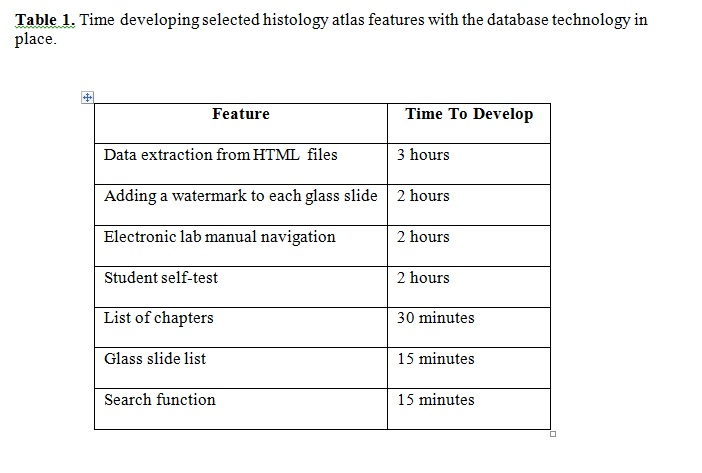Medical educators benefit from Web-based, database-driven search engines, such as Googletm or PubMed, but they have failed to harness database technology to improve computer-assisted instruction (CAI) applications. At Vanderbilt University School of Medicine, an interactive, Web-based histology atlas was created to place the students’ laboratory manual on the Web and to display hundreds of histological images via the use of Hypertext Markup Language (HTML). The atlas was converted into a database-driven tool using a Web programming language (PHP) and a MySQL® database (http://www.mc.vanderbilt.edu/histology/atlas/chapters/example). The conversion streamlined the development and modification of the atlas, and it enabled the implementation of advanced features.
Small PHP programs were constructed to extract the images and descriptions from each of the hundreds of existing HTML files. These data were then loaded into the database. A single PHP file was then created to replace the hundreds of individual HTML Webpages by querying the database for the image-specific information (e.g., slide number, magnification, stain, and tissue depicted). With minimal time invested (Table 1), advanced features, including a search function, a student self-test, and a slide list that enabled students to see which chapters referenced every glass slide, were created and implemented. Moreover, the database structure permitted the content expert (e.g. medical educator) to streamline the construction, editing, and manipulation of data associated with the atlas using Microsoft® Word and Excel. The conversion also allowed these steps to be accomplished without the medical educator being familiar or proficient with computer programming and without the continual reliance upon a technical expert. Finally, the database-driven nature increased the interactivity of the tool by creating multiple methods to navigate throughout the CAI application and the ability to monitor (and ultimately assess) atlas usage.
Our experience shows it is possible and efficient to convert existing CAI applications created without database technology to an underlying database structure. The database structure permitted maintenance and upgrades without continual reliance upon a technical expert. Such a conversion maximizes the capability, functionality, and adaptability of a CAI application while saving time in construction and editing.
